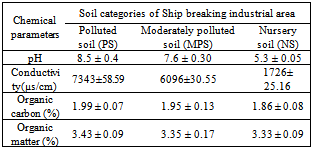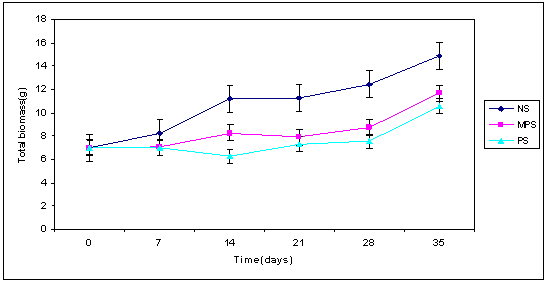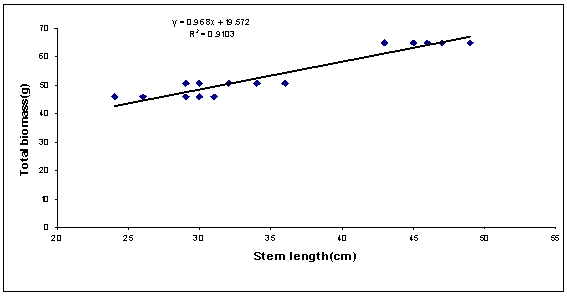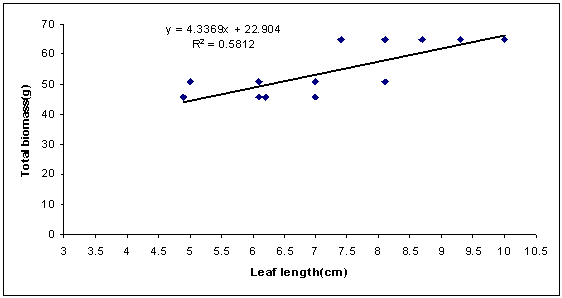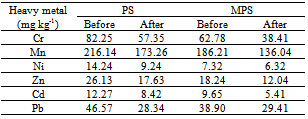-
Paper Information
- Paper Submission
-
Journal Information
- About This Journal
- Editorial Board
- Current Issue
- Archive
- Author Guidelines
- Contact Us
American Journal of Environmental Engineering
p-ISSN: 2166-4633 e-ISSN: 2166-465X
2013; 3(3): 121-129
doi:10.5923/j.ajee.20130303.02
Ship Breaking Yard Soil: Safe or Harm for Seedlings Growth
Ashik Rubaiyat1, Md. Lokman Hossain2, Sarah Jabeen Kristy2, Md. Kawser Uddin2
1Department of Business Administration, University of Wales Trinity Saint David, United Kingdom
2Environment and Social Development Organization, Lalmatia, Dhaka, 1207, Bangladesh
Correspondence to: Md. Lokman Hossain, Environment and Social Development Organization, Lalmatia, Dhaka, 1207, Bangladesh.
| Email: |  |
Copyright © 2012 Scientific & Academic Publishing. All Rights Reserved.
The study was conducted in the nursery of the Institute of Forestry and Environmental Sciences, University of Chittagong, Bangladesh to evaluate the performance of Toona ciliata seedlings grown under three different categories of soil viz. polluted, moderately polluted soil of ship breaking yard and nursery soil. The study showed that polluted soil and moderately polluted soil contain more organic carbon and organic matter compare to that of nursery soil. pH value and conductivity in polluted soil (8.5 and 7343 µs/cm respectively) and moderately polluted soil (7.6 and 6096 µs/cm respectively) also varied than that of nursery soil. Total dry weight of seedlings was found maximum (14.87±0.47g) grown under nursery soil followed by moderately polluted soil (11.69±0.39g) and polluted soil (10.58±0.33g) over the period of 35 days. The leaf elongation, stem elongation and root growth of seedlings were negatively affected under polluted and moderately polluted soil. It has suggested that nitrogen fixing and pollution resistant species can be used for landscaping polluted areas. Adequate study should be carried out to find out indigenous species that are suitable to plant in the ship breaking yard.
Keywords: Toona ciliata, Polluted Soil, Ship Yard, Growth, Total Biomas, Heavy Metal
Cite this paper: Ashik Rubaiyat, Md. Lokman Hossain, Sarah Jabeen Kristy, Md. Kawser Uddin, Ship Breaking Yard Soil: Safe or Harm for Seedlings Growth, American Journal of Environmental Engineering, Vol. 3 No. 3, 2013, pp. 121-129. doi: 10.5923/j.ajee.20130303.02.
Article Outline
1. Introduction
1.1. Brief of Plant Species (Toona Ciliata)
- Toona ciliata J. Roem (Family: Meliaceae) locally known as toon, is a large deciduous tree with a spreading crown, commonly attaining a height of 20-30 m and a girth of 1.8-3 m. Bark dark grey or reddish-brown, smooth up to middle age, afterwards rough, with shallow reticulate cracks exfoliating in irregular woody scales. Leaves 30-50 cm long, on young trees up to 90 cm long, usually imparipinnate, sometimes paripinnate by the abortion of the terminal leaflet. Flowers small, honey scented, cream colored, in drooping or sub-erect terminal panicles, usually shorter than the leaves. Seeds pale brown, very light, winged at both ends, 1.3-1.5 cm long including the wing. It is one of Australia's few native deciduous trees. The timber is red in colour, easy to work and very highly valued. It was used extensively for furniture, wood paneling and construction, including shipbuilding. A tree of subtropical climates; T. ciliata grows in moist localities such as ravines, banks of streams and even swamps. It grows best in fire-protected savannah, abandoned cultivation and in small gaps in forest, and does not do well on dry hill slopes[1].
1.2. Ship Breaking in Bangladesh
- Ship breaking is the process of dismantling an obsolete vessel’s structure for scrapping or disposal. Conducted at a pier or dry dock or dismantling ship, it includes a wide range of activities, from removing all gears and equipment to cutting down the ship’s infrastructure. Ship breaking is a challenging process, due to the structural complexity of ships and the many environmental, safety, and health issues involved[2]. Of the approximate 45,000 ocean-going ships in the world about 700 (1.55%) are taken out of service every year[3]. At the end of their sailing life, ships are sold, so that the valuable steel about 95% of a ships’ mass, can be recovered[4]. Due to the spread of newly established ship breaking yards, industrial plants, towns, resort-areas, water and gas pipelines, highways and roads, the area of arable land and that of natural plant cover, forests meadows and marshes have decreased[5]. The effect of the industrial wastewater – contaminated soil on the forest tree species is not widely known in Bangladesh. Germination and initial growth of seedling are the stages of tree development that are often most sensitive to adverse environmental factors[6]. Industry which is the very important sector of countries economy polluted the soil by disposing their waste into the soil. For this the soil properties of industrial area are change which hamper vegetation growth and other activities of soil. There are more than 140 industries in Kalurghat, Nasirabad, Patenga, Kaptai, Bhatiary, Barab Kunda, Fauzdarhat and Sholoshahar in Chittagong. All their wastes fall in the soil of the sea or in the nearby soil of those industries.
1.3. Plants as Remediation of Heavy Metals
- Soils contaminated with heavy metals cause many environmental and human health problems calling for an effective technological solution. Many sites around the world remain contaminated, because it is expensive to clean them up by available technologies[7]. Phyto-remediation is considered to be an innovative, economical, and environmentally compatible solution for remediation of heavy metal contaminated sites[8][9][10][11][12]. Heavy metals may be bound or accumulated by particular plants, which may increase or decrease the mobility and prevent the leaching of heavy metals into groundwater. Growing plants can help to reduce heavy metal pollution[7]. The advantage of this technique is evident as the cost of phytoremediation is much less than the traditional in situ and ex situ processes; plants can be easily monitored to ensure proper growth; and valuable metals can be reclaimed and reused through phytoremediation. The metals most commonly associated with phytoremediation are lead, cadmium, zinc, nickel, or radioactive isotopes such as uranium or cobalt[8][9]. Plants in metal-contaminated soils have been used only since the 1970s[13]. Specifically, several subsets of metalphytoremediation have been developed. They include:(1) phyto- stabilization, in which plants stabilize the pollutants, thus rending them harmless; (2) phyto-extraction, in which heavy metal hyper-accumulators, high-biomass,metal-accumulating plants and appropriate soil amendments are used to transport and concentrate metals from the soil into above-ground shoots which are harvested with conventional agricultural methods; (3) phyto-volatilization, in which plants extract volatile metals from soil and volatilize them from the foliage[14].Plants play an important role in all subsets of phytoremediation; however, it is necessary to use plants that could tolerate high levels of heavy metals[7]. There are known some tolerant plants such as Polygonum hydropiper L., Rumex acetosa L.[10]; Lolium perenne cv Elka[12], Brassica juncea (L.) Cern.[11], Thlaspi caerulescens J. Presl, C. Presl, Zea mays L.[9] or Vetiveria zizanioides (L.) Nash. ex Small[15]. Vetiver grass, due to its unique morphological and physiological characteristics, is known for its effectiveness in erosion and sediment control, in addition to its tolerance of heavy metal contamination[16][17]. Plants called hyper-accumulators are preferred, because they take up 100 times the concentration of metals over other plants[13]. They accumulate toxic metals through their roots and transport them to the stems or leaves. Researchers hope that these metal-scavenging plants, calledhyper-accumulators, could be grown in contaminated soils and harvested like hay[9][11][12]. The metal could then be recovered and recycled when burned and the ash collected[8].
1.4. Background of Study Area
- The study was conducted at ship breaking industrial area along the Chittagong Sea shore at a stretched 14 Kilometers from Fouzdarhat to Kumira adjacent to Sandwip Channel and besides Dhaka-Chittagong trunk road. Ship breaking industry covers an area of about 8 km2[18]. There is several ship breaking industries present here. The waste water that are discharged from the industries, passed through directly by the drains to the sea and partially fallen nearby soil and hence soil is contaminated for their indiscriminate cutting of ship. These metals are leached out through the rain water to the ground and washed out by both heavy rainfall and tide and wave to the sea. So, all the untreated water ultimately falls into the Sea. It pollutes the Sea water immensely. On the other hand, while flowing through the open drains, the waste and foul waters also pollute its surrounding environments with its foul nature. These are very harmful for the people living nearby and also for the plants. The study was conducted with a view to determine the magnitude of pollution caused by the effluents and their potential effect on the seedlings growth and development.
2. Methodology
2.1. Site Selection
- Reconnaissance survey was conducted in the Madam Bibirhut Ship breaking industrial area to select the industrial site which contributes mostly in polluting their surroundings. Soil samples were collected from the ship breaking industrial area which is mostly polluted. Moreover, soil samples were also collected from the area adjacent to the industrial site which is moderately polluted that is partly responsible for the damage of the surrounding environment.
2.2. Sampling
- During reconnaissance survey in ship breaking industrial area two distinguished areas were selected (i.e. polluted area and moderately polluted area) for collection of soil samples. Soil samples were collected from (20X20) m2 plots of polluted and moderately polluted area of ship breaking yards. From each plot three soil samples were collected from three different places within the plot in order to avoid site variation. From each plot soil samples were collected at a depth of 0-10cm and the soil samples were collected using core sampler. Collected sample were brought to the nursery and then applied on the growing seedlings in three different treatments like polluted soil (PS), moderately polluted soil (MPS) and Nursery soil (NS).
2.3. Soil Analysis
- Different parameters of soil were measured for three individual treatments i.e. PS, MPS and NS. The soil samples were dried in the air under room temperature after removing the roots and stones. Air dry samples were used for the analysis of pH and salinity and oven dry (85℃, one and half hour) soil samples were used to determine % of organic carbon and organic matter. Polluted and moderately polluted soils were analyzed before and after treatment to assess heavy metal concentration in soil samples. The total content of acid extractable heavy metals was determined in 1 g sample from each combination using wet oxidation with the concentrated HNO3 and 3% H2O2. The metal concentrations were determined by Atomic Absorption Spectroscopy (Analyst-300, Perkin-Elmer).
2.4. Selection and Establishment of Seedling
- Seedlings (about 5 months of age) of T. ciliata were transplanted into polythene bag (6X9) inch in size, with a mixture of nursery soil and cow dung in a proportion of (3:1), polluted soil and cow dung in a proportion of (3:1) and moderately polluted soil and cow dung in a proportion of (3:1). All bags were watered every day until the seedlings were established. Seedlings with new leaves considered as established seedlings. The data recording was started when the seedlings were established.
2.5. Design of the Experiment
- Experiments were designed to find out the differences in growth performances of seedlings, which were treated with NS, PS and MPS respectively. For this purpose, a Completely Randomized Design (CRD) with 5 replications was used. Each replication consisted of 15 seedlings and each treatment consisted of 25 seedlings. So, a total 75 seedlings were used in five different rows. Continuous harvests of 7 days interval was conducted and in each harvest 15 species from five rows were harvested randomly (Figure-1).
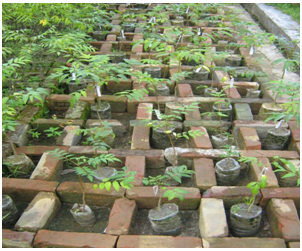 | Figure 1. Experimental design of the study |
2.6. Data Collection
- During the measurement of various parameters data was collected from the initial to the final stage of the experiment successfully. The measurement of each parameter was conducted up to day 35 of the drying cycle with regular intervals of three to seven days.
2.7. Measurement of Different Growth Parameters
- Entire stem length of the seedlings of the species of each treatment was recorded in twenty-five replication using an ordinary scale. The results were presented in the form of graph. Leaf length of a very young growing leaf of each treatment of each species was recorded in twenty-five replications on each occasion of measurement. During harvesting on each occasion of measurement the roots of entire soil column of each individual seedling were collected separately and root dry weight at 70℃ was measured. For the measurement of stem and leaf biomass stems and leaves were separated during harvesting and their dry weights at 70℃were recorded (Figure-2).
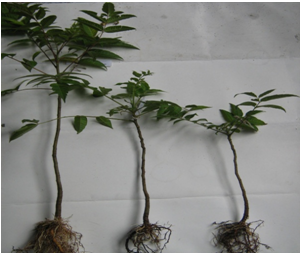 | Figure 2. Seedling growth (left to right) in NS, MPS, PS at 35 days |
3. Results
3.1. Chemical Properties of Soil in Ship Breaking Yard
- The soil pH in MPS was less (7.6) compare to that of PS (8.5) and thus PS was more alkaline in nature than that of MPS. Similarly, he conductivity was more (7343 µs/cm) in PS compare to that of MPS (6096 µs/cm) and NS (1726 µs/cm). On the other hand, the amount of organic carbon was found highest in PS (1.99%) followed by MPS (1.95%) and NS (1.86%). Similarly, the amount of organic matter was highest (3.43%) in PS compare to that of MPS (3.35%) and NS (3.33%) (Table 1).
|
3.2. Leaf Growth
- Leaf length increment was reduced in seedlings grown under PS and MPS compare to that of seedlings grown in NS over a period of 35 days of their growth (Figure 3). Leaf dry weight (LDW) was also reduced in seedlings grown under PS and MPS than that of seedlings grown under NS during their growing period of 35 days and the reduction was significant (Table 2). The leaf dry weight of seedlings was found maximum (4.42g) grown under NS followed by MPS (3.43g) and PS (3.13g) over the period of 35 days.
3.3. Stem Length
- Stem length increment was reduced in seedlings grown under PS and MPS compare to that of seedlings grown in NS over a period of 35 days of their growth. The reduction of stem elongation under MPS and PS was significant. The stem length was found maximum (49 cm), when seedlings grown under NS followed by MPS (36 cm) and PS (31 cm) over a period of 35 days (Figure 4). Stem dry weight was also reduced in seedlings grown under PS and MPS than that of seedlings grown under NS during their growing period of 35 days and the reduction was significant (Table 2).The stem dry weight of seedlings was found maximum (5.32g) grown under NS followed by MPS (4.14g) and PS seedlings (3.86g) over the period of 35 days.
3.4. Collar Diameter
- Collar diameter increment was reduced in seedlings grown under PS and MPS compare to that of seedlings grown in NS over a period of 35 days of their growth and the reduction was gradually increased over the period with significant reduction in day 35 (Figure 5). Collar diameter was found maximum (9.4 mm), when seedlings grown under NS followed by MPS (8.3 mm) and PS (7mm) over a period of 35 days.
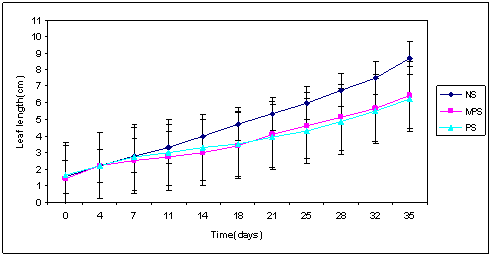 | Figure 3. Increase in leaf length (cm) of growing seedlings of T. ciliata over a period of 35 days under 3 different categories of soil:NS, MPS and PS |
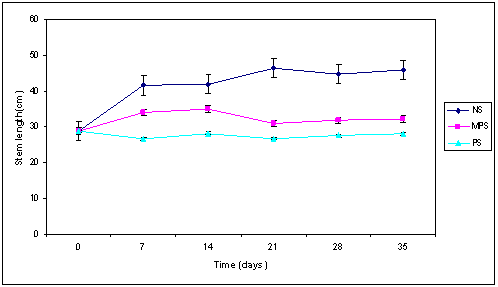 | Figure 4. Increase in stem length (cm) of growing seedlings of T. ciliata over a period of 35 days under three different categories of soil viz: NS, MPS and PS |
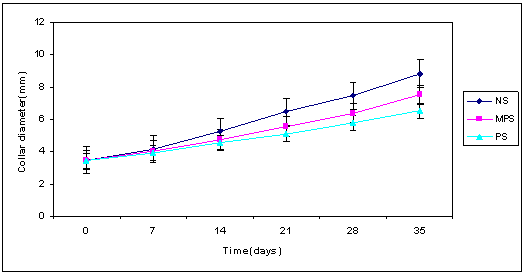 | Figure 5. Change in collar diameter (mm) of growing seedlings of T. ciliata over a period of 35 days under three different categories of soil viz: NS, MPS and PS |
3.5. Root Dry Weight
- Root dry weight (RDW) was reduced in seedlings grown under PS and MPS than that of seedlings grown under NS during their growing period of 35 days and the reduction was significant (Table 2). The root dry weight of seedlings was found maximum (5.13g) grown under NS followed by MPS (4.1g) and PS (3.53g) over the period of 35 days.
3.6. Total Dry Weight
- Total dry weight (TDW) was reduced in seedlings grown under PS and MPS than that of seedlings grown under NS during their growing period of 35 days and the reduction was significant (Table 2). The total dry weight of seedlings was found maximum (14.87±0.47g) grown under NS followed by the seedlings grown under MPS (11.69±0.39g) and PS (10.58±0.33g) over the period of 35 days (Figure 6).
3.7. Relationship between Total Biomass and Leaf Length, Stem Length and Collar Diameter
- Regression analysis showed that correlation co-efficient between total biomass and elongation of stem length was very strong (R2=0.9103) (Figure 7) followed by the correlation co-efficient between total biomass and elongation of leaf length (R2=0.5812) (Figure 8) and the correlation co-efficient between total biomass and increase in collar diameter (R2=0.8117) (Figure 9).
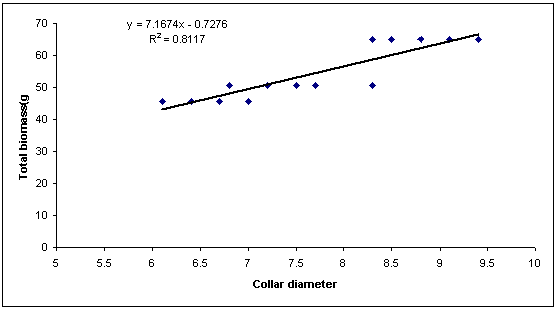 | Figure 9. Relationship between collar diameter (mm) and total biomass (g) of growing seedling of T. ciliata under three different categories of soil viz: NS, MPS and PS over a period of 35 days. Points are results of mean of five observations on successive occasion (day 7, 14, 21 and 28) |
3.8. Heavy Metal Analysis
- The study revealed that seedlings growth stunted due to presence of high concentration of heavy metals in polluted and moderately polluted soil. Significant concentration of all heavy metals was absorbed by seedlings. Manganese was found highest in polluted and moderately polluted soils in samples of before seedlings sowing and after 35 days of plant harvest (Table 3).
|
4. Discussion
4.1. Chemical Properties of Soil in Ship Breaking Yard
- Polluted soil and moderately polluted soil carried more organic carbon and organic matter compare to that of nursery soil. Similar results were also detected in relation to pH value and the conductivity in polluted soil (8.5 and 7343 µs/cm respectively) and moderately polluted soil (7.6 and 6096 µs/cm respectively) (Table 1). The influence of various mechanical and chemical processes conducted in the ship breaking yard may change these chemical properties of soil used in these sectors. These findings are in the resonance with the findings of[19].
4.2. Leaf Growth
- The reduction of leaf growth under polluted and moderately polluted soil could be related to reduced leaf cell expansion and elongation[20], usually caused by reduction in photosynthesis due to some chemical change resulting decline in leaf water potential[21][22][23]. In this case reduced leaf water due to fewer water supplies from polluted and moderately polluted soil categories can decrease net photosynthesis, so leaf growth is inhibited, as reported in sorghum by[24], Soybean[25] and French bean[26]. Because of this inhibition of leaf growth leaf biomass production of seedlings grown under polluted and moderately polluted soil has also reduced significantly (Table 2).
4.3. Stem Length
- The reduction of stem length under polluted soil and moderately polluted soil could be related to reduced cell expansion or shortage of assimilative capacity, usually caused by reduction of cell sap due to some chemical change resulting reduced assimilating capacity to the stem.
4.4. Root Dry Weight
- Root dry weight was reduced in seedlings grown under polluted and moderately polluted soil compare to that of nursery soil. In this case reduced root length due to fewer water supplies from polluted and moderately polluted soil may lose their capacity to take up water because of resistance to soil water movement at the interface between roots and soils[27].
4.5. Total Biomass
- Total biomass production was reduced in seedlings grown under polluted and moderately polluted soil compare to that of nursery soil. The leaf elongation, stem elongation and root growth of seedlings was negatively affected under polluted and moderately polluted soil. Because of this inhibition of leaf elongation, stem elongation and root growth total biomass production of seedlings grown under polluted and moderately polluted soil has also reduced significantly (Table 2).
4.6. Heavy Metal Reduction
- Heavy metal concentration in both polluted and moderately polluted soil was utilized by seeding for its growth and development, as heavy metals are the micro nutrients needed for plant in small quantity.
5. Conclusions and Recommendations
- Pollution is a worldwide problem and now it is receiving worldwide attention[28]. Pollution of the physical environment which consists of major areas as land, surface and ground water and air from the ship breaking yard and depletion of resource base due to different ship breaking activities. The growth and physiological behavior of plants in an environment may be used to predict the performance of the species in the field under similar conditions. The Charter of Economic Rights proclaims that “the protection, preservation and enhancement of environment for the present and the future generation is the responsibility of all state. Pollution is an unavoidable part of all economic activities. Development and pollution is very much inter-related. So, we must need to operate our development activities keeping the pollution within the tolerable limit for the sustainable development of our environment.The soil pH, conductivity, organic carbon, organic matter and heavy metals were more under polluted and moderately polluted soil. Plants may differ in their sensitivity to different categories of soil. In the study reduced leaf elongation, stem elongation, collar diameter increment and total biomass of seedlings grown under polluted and moderately polluted soil. Growth and production is affected under polluted and moderately polluted soil. Although the photosynthetic rates, stomatal conductance shoot water potential are not measured in the study, different growth parameters which are measured able to represent the growth performance of plants. Soil is one of the main components of environment. It is a natural body occupying a portion of earth that supports plant growth, which has possessed properties due to the action of climate and vegetation upon parent material as conditioned by relief over a period of time. With respect to leaf process, continuous measurement of selected, growing leaves is a better option than measurement of recently fully expands leaves. The responses of seedlings under polluted and moderately polluted soil provide a basis for predicting their performance in the field. In Bangladesh, conducting afforestation programs in industrial sites may be impractical without prior selection of appropriate species. The physiological process of plant and corps will be also affected and consequently their yield and production will be reduced. There is also a chance to enter the pollutants in the food chain through the crops. Ship breaking yard are mostly responsible for soil pollution. In order to avoid such a horrible condition we need to take all the precautionary measures at this right moment. Large-scale plantation programs have to be taken, especially around the industries as well as in ship breaking yard as trees are more effective in absorbing the different pollutants from the soil, air and water. These programs should be taken to stable the already deteriorated environment with the help of the general people and the concerned authorities. It is suggested that nitrogen fixing and pollution resistant species to be planted in landscaping polluted areas. Adequate study should be conducted to find out indigenous species that are suitable to plant in the ship breaking yard.
References
| [1] | Agro Forestry Tree Database. World Agroforesty Centre. http://www.worldagroforestrycentre.org/sea/products/afdbases/af/asp/SpeciesInfo.asp?SpID=1649 |
| [2] | OSHA. 2001. Ship Breaking Fact Sheet.U.S. Department of Labor :Occupational Safety and Health Administration. Available at. www.osha.gov. |
| [3] | FIDH. 2002.Where do the “floating dustbins” end up? Labour Rights in Shipbreaking Yards in South Asia The cases of Chittagong (Bangladesh) and Alang (India).(Investigative Mission Report). International Federation for Human Rights . No. 348/2, December 2002,Paris.pp 84 |
| [4] | Greenpeace. 2005. Ship breaking. Ship breaking site English. Available at www.greenpeaceweb/shipbreak.org |
| [5] | Chhatwal, G. R. 1998. Encyclopedia of environmental management, volume 1, pp.298-313. |
| [6] | Boland, R.G.A.(Eds.). 1993. Production Management and the Environment. Sterling Publishers Private Limited, New Delhi, India. 18-35pp. |
| [7] | Dalė Pečiulytė, Jūratė Repečkienė, Loreta Levinskaitė, Albinas Lugauskas, Algirdas Motuzas, Igoris Prosyčevas, 2006. Growth and metal accumulation ability of plants in soil polluted with Cu, Zn and Pb. EKOLOGIJA. Nr.1. P. 48–52. |
| [8] | Comis D. 1996. Green remediation. Journal of Soil and Water Conservation. Vol. 51. P. 184–187. |
| [9] | Lombi E., Zhao F. J., Dunham S. J., McGrath S. P. 2001. Phytoremediation of heavy metal-contaminated soils: natural hyper-accumulation versus chemically enhancedphytoextraction. J. Environ Qual. Vol. 30(6). P. 1919–1926. |
| [10] | Wang Q. R., Cui Y. S., Liu X. M., Dong Y. T., Christine P. 2003. Soil contamination and plant uptake of heavy metals at polluted sites in China. J. Environ. Sci. Health.Vol. 38(5). P. 823–838. |
| [11] | Bennet L. E., Burkhead J. L., Hale K. L., Terry N., Pilon M., Pilon-Smits E. A. 2003. Analysis of transgenic Indian mustard plants for phytoremediation of metal-contaminated mine tailings. J. Environ. Qual. Vol. 32(2). P. 432–440. |
| [12] | O’Connor C. S., Leppi N. W., Edwards R., Sunderland G. 2003. The combined use of electro-kinetic remediation and phytoremediation to decontaminate metal-polluted soils: laboratory-scale feasibility study. Environ. Monit. Assess.Vol. 84(1–2). P. 141–158. |
| [13] | Cunningham S. D., Lee C. R. Phytoremediation: Plant-based remediation of contaminated soils and sediments. In: Skipper H. D., Turco R. F. (Ed.). 1995. Bioremediation Science and Application. Wisconsin: Soil Science Society of America, Inc., American Society of Agronomy, Inc., Crop Science Society of America, Inc. P. 145–147. |
| [14] | Cunningham S. D., Berti W. R., Huang J. W. 1995. Phytoremediation of contaminated soil. TIBECH. Vol. 13. P.393–397. |
| [15] | Greenfield J. C. 1989. Vetiver grass (Vetiveria), the ideal plant for vegetative soil and moisture conservation. The World Bank. Washington, DC. |
| [16] | Grimshaw R. B. 1989. New approaches to soil conservation. Rainted Agriculture in Asia and the Pacific. Vol.1(1). P. 67–75. |
| [17] | Trough P. N., Kaker D. 1998. Vetiver grass system for environmental protection. Technological Bulletin Pacific Rim Vetiver Network. Office of the Royal Development Projects Board, Bangkok, Tailand. No. 1. |
| [18] | Hussain, M.M. 1999. Present status of ship breaking yard and its effect on environment. A review paper submitted to Institute of Forestry and Environmental Sciences, University of Chittagong, Chittagong, Bangladesh. Pp: 6-10. |
| [19] | Sandhya. S., Snehlata. S. R. 2005. Effect of paper mill industry effluent on chlorophyll content of same medicinal plants. Adv Plant Sci, 18(2) (2005): 691–692. |
| [20] | Chhatwal, G.R. 1998a. Hazardous Wastes -Encyclopedia of Environmental Management. Vol.II. Amol Publications Ltd., India . 491-499pp. |
| [21] | Boyer, J. S. 1968. relationships of water potential to growth of leaves. Plant physiology, 43: 1056-1062. |
| [22] | Boyer, J. S. 1970. Deffering sensitivity of photosynthesis to low water potentials in corn and soybean, plant physiology, 46: 26-239. |
| [23] | Osonubi, O. and Davies, W. J. 1985. Solute accumulation in leaves and roots of woody plants subjected to water stress. Oecologia (Berlin), 32: 323-332. |
| [24] | Shearman, L. L., Eastin, J. D., Sullivan, C. Y. and Kinbacher, E. J. 1972. Carbon dioxide exchange in water stressed sorghum. Crop science, 12: 406-409. |
| [25] | Beaardsell, M. F., Mitchell, K. J. and Thomas, R. G. 1973. effect of water stress under contrastion environmental conditions on transpiration and photosynthesis in soybean. Journal of experimental Botany, 24: 579-596 |
| [26] | O’toole, J. C., Ozbun, J. L. and Wallace, D. H. 1977. Photosynthetic response to water stress in Phaseolus vulgaris, Physiologia Plantarum, 40: 11-114. |
| [27] | Zhang, J. and Davies, W. J. 1989a. Abscisic acid produced in dehydrating roots may enable the plant to measure the water status of the soil. Plant, Cell and Environment, 12: 73-81. |
| [28] | Sengar, D.S., 1999. Environmental Enactments and Enforcement Towards Sustainable Development. 25-42 pp. In: G. C. Pande D. C. Pandey. 1999. Environmental Development and Management. Amol Publication Pvt. Ltd. India. |
 Abstract
Abstract Reference
Reference Full-Text PDF
Full-Text PDF Full-text HTML
Full-text HTML